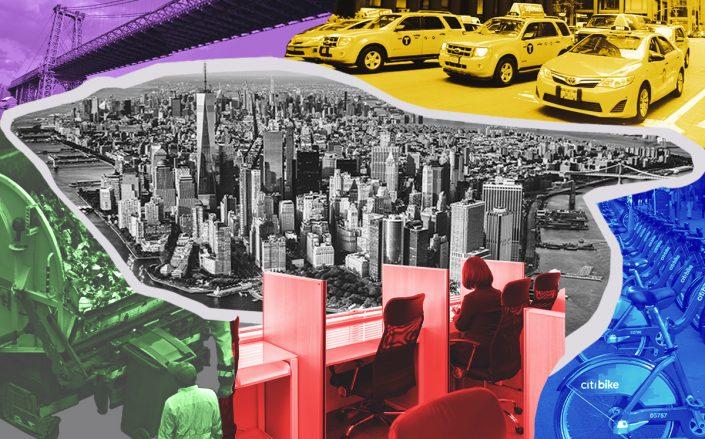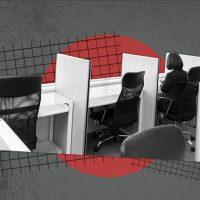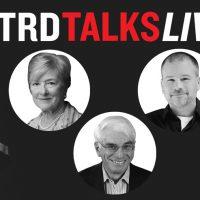
From office occupancy to garbage collection, statistics indicate that some aspects of city life are gradually returning to the pre-coronavirus norm — though far more in some areas than others (iStock)
Six months after New York was locked down — and 420,000 residents packed up and left — the city has largely reopened. Its Covid rate has been under 1 percent since midsummer. But are New Yorkers returning to town and their routines?
The answers are in the data.
The Real Deal drilled into the numbers to see if people are heeding calls by the real estate industry and elected officials to come back. We found that while traffic is nearly back to normal and Citi Bike is more used than ever, other levels of activity — though improving — remain well below pre-pandemic levels, and especially in Manhattan.
Since Phase 4 of reopening began in July, the city has been taking smaller steps toward normalcy. While theaters, clubs and indoor dining rooms remain closed, gyms and malls were allowed to reopen at limited capacity in August, as dining rooms will be at the end of this month.
Other signs of life: Foot traffic has bounced back in outer-borough neighborhoods, though it remains low in formerly touristy areas such as Times Square. Cars are circling again and complaints about finding parking are on the rise (on Twitter, anyway). And this week, after some stops and starts by Mayor Bill de Blasio, public schools started welcoming students again.
The Real Deal interviewed office landlords and looked at metrics — including public transit use, garbage collection, and mobility information — to see if, and where, New Yorkers are coming back. There are encouraging signs, but things aren’t back to normal just yet.
Landlords and real estate professionals are starting to see activity pick up at office buildings, after a very slow start once they were allowed to reopen in July.
Peter Riguardi, president of JLL in the tri-state area, said he has seen a noticeable increase at 330 Madison Avenue, where the firm has an office.
“In July and August I don’t remember riding the elevator with anyone other than myself,” he said in an interview. “But now you’re seeing more people as you navigate the floor to grab a Diet Coke or go to the men’s room or ride the elevator. The last few days have been like going back to school.”
The Durst Organization, one of the city’s major office landlords, has seen slightly promising indicators, with usage increasing more than 20 percent at its buildings after Labor Day — but only from about 8 percent to 10 percent occupancy. Fisher Brothers has seen a similar shift, with 10 percent of tenants present at the company’s office buildings after Labor Day weekend, up from just 4 percent earlier this summer.
“We’re hearing from tenants that they are looking forward to getting back to the office, where they can collaborate and be more productive,” said partner Ken Fisher. The company has added thermal temperature scanners and UV air-purifying systems to its properties to help workers feel safe.
“Post-Labor Day, there has been a real shift in tenants’ desires to get back to work, and we’re here to help them do that. We are all in,” he added.
Read more



Public transport took a big hit in the early days of the pandemic, with subway, Long Island Rail Road and Metro-North ridership all collapsing by more than 90 percent from monthly averages a year prior. According to data from the Metropolitan Transportation Authority, the recovery has been slow, with ridership on these modes of transport still at less than one-third of pre-coronavirus levels in mid-September.
Bus ridership, meanwhile, declined less steeply early on and has also recovered more quickly in recent months. That appears to have been boosted, in part, by bus service being free for most of the summer, with riders encouraged to board from the back to protect drivers from infection. As of mid-September, with bus fares reinstated, ridership is back to just about half of pre-coronavirus levels.
Car traffic, on the other hand, is closer to a full recovery: Traffic on the MTA’s seven bridges and two tunnels is just about 10 percent below the pre-pandemic average. This uneven recovery has attracted the attention of officials as well, amid concerns that lighter public transit use could make traffic congestion worse than it was before the pandemic.
“Leave the car at home. Take public transportation,” Gov. Andrew Cuomo told New Yorkers two weeks ago. “Try it. I think you’re going to be favorably impressed.”
Another mode of transit that has emerged as an alternative subways and buses is Citi Bike. Although the total number of rides is not out of line with that of previous years, the duration of a typical Citi Bike ride is significantly longer now, indicating a shift in travel and commuting patterns. A larger share of riders is now paying for single rides or day passes instead of annual memberships.
Mobility metrics — measuring people moving around — from location data firm Unacast show that Manhattan trails far behind the other boroughs in average distance traveled per day. The data also show that the city’s mobility rebound plateaued in July before surging in August, a trend that is reflected in mobility data for other counties across the country.
Garbage collection is another area that has seen a noticeable shift from pre-coronavirus levels — and where Manhattan has lagged the other boroughs. Monthly collection of all types of waste has risen significantly in the outer boroughs since the start of the pandemic, and this surge is most visible in the metal, glass and plastic category. Waste collection in Manhattan, meanwhile, has held steady or declined, depending on the type of waste.
The shift in garbage collection can be attributed to outer-borough residents being more likely than Manhattanites to continue living here, a Department of Sanitation spokesperson told The City when the trend first emerged in April.
But while these signs might give the city’s real estate industry hope, a return to what some might consider normal — the ability to linger at a restaurant, go to a concert, or be in an office with dozens of coworkers — will be difficult before a coronavirus vaccine becomes widely available.
Attempts at bringing larger numbers of employees back to offices have been uneven, as JPMorgan’s experience this month demonstrates. The investment bank sent some employees home after a worker tested positive for Covid-19, just days after directing some to return to the office.
“I think that’s what we’re going to have to expect with this virus,” JLL’s Riguardi said.
